Watch your back, Singapore, the minnows are catching up
It used to be that Singapore would be assured of a win whenever the Lions met Cambodia, the Philippines or Myanmar. But this is no longer the case these days. TODAY guest columnist John Duerden (sports [at] mediacorp.com.sg) looks at the rise of the three former Asean minnows that are now almost toe-to-toe with Singapore on the pitch.
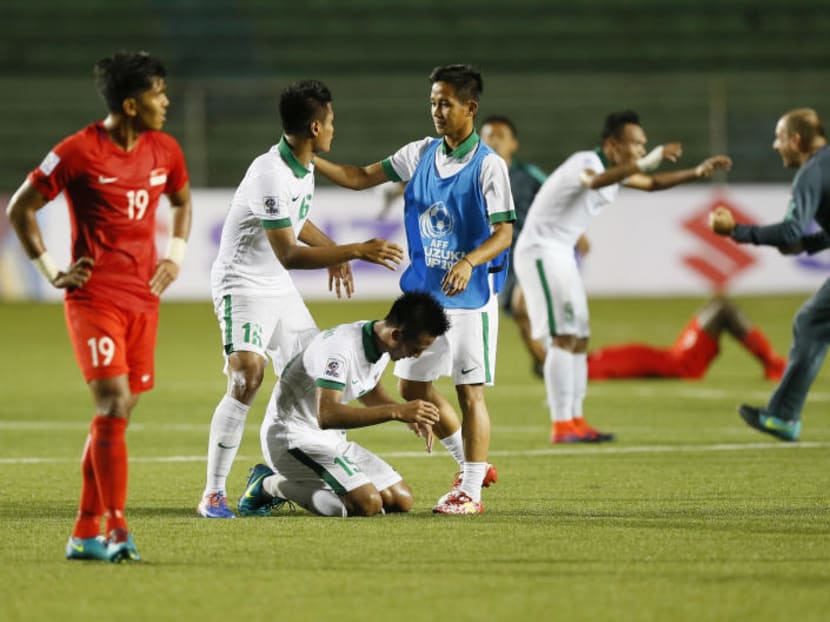
There is a sinking feeling after Singapore crashed out of the group stages of the AFF Suzuki Cup that the Lions will struggle from now on to be one of the football powerhouses in South-east Asia. Photo: AP
It used to be that Singapore would be assured of a win whenever the Lions met Cambodia, the Philippines or Myanmar. But this is no longer the case these days. TODAY guest columnist John Duerden (sports [at] mediacorp.com.sg) looks at the rise of the three former Asean minnows that are now almost toe-to-toe with Singapore on the pitch.
SINGAPORE - Nothing seems certain anymore — 2016 has seen to that. The year ends with Donald Trump about to enter the White House, the United Kingdom about to leave the European Union and the English Premier League trophy in Leicester City’s cabinet.
The sands are shifting in South-east Asian football too, and that is something that Singapore fans are going to have to get used to.
The Lions have fallen at the group stage at the AFF Suzuki Cup before but this feels different. In 2014 when Singapore also crashed out, there was never a sinking feeling that they may struggle to get back among the regional elite.
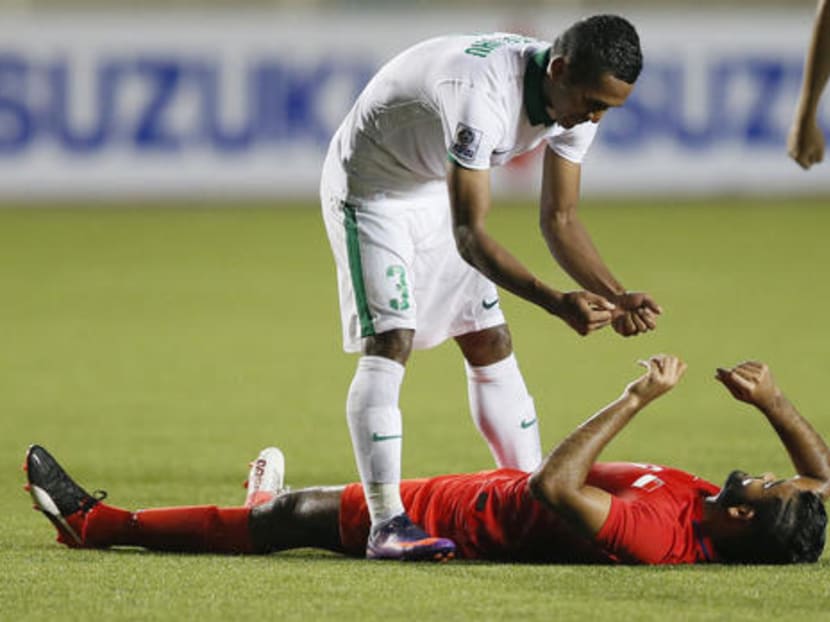
(An Indonesian player trying to help Singapore's Faritz Hameed up after Singapore lost 1-2 to go crashing out of the Suzuki Cup group stages. Photo: AP)
Singapore may equal Thailand’s four (probably soon to be five titles) in the history books but the near future sees the War Elephants leaving the rest behind.
That was always possible but more worrying is that Myanmar, Cambodia and the Philippines — three traditional minnows in the region — are now catching up.
“We can see that more teams in South-east Asia are developing and improving,” Thailand coach Kiatisuk Senamuang told TODAY.
“Now we know that whatever team we play in the Suzuki Cup will give a tough game. This means more challenge and this is good for us.”
DRIVING FORCE
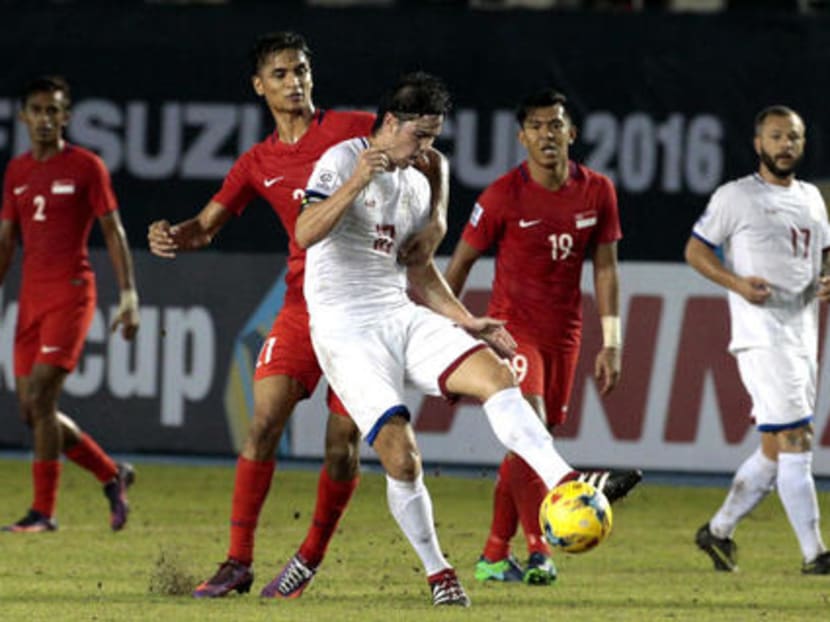
(The Philippines held Singapore to a 0-0 draw. Photo: Jason Quah/TODAY)
ppines lost 19 out of 21 games including a 0-13 thrashing by Indonesia in 2002. Then came three successive semi-finals and high expectations ahead of 2016.
The driving force behind much of the improvements has been fairly simple. It was done mainly by bringing in players born overseas, mostly in Europe, and who have one Filipino parent. Stephan Schrock has played for Eintracht Frankfurt, Javier Patino is in the Chinese Super League with captain Phil Younghusband a former Chelsea trainee.
“They had added to the team over the years,” said Philippines coach Thomas Dooley.
“Their European background gives them a good football education which means they can tactically grasp things quickly and that is important for a national team coach when you don’t have much time with the players.”
Singapore has been known to hand out jerseys to overseas-born players active in the S.League, but the Philippines just has a much bigger diaspora to choose from. The hope is that as the Philippines improves, more eligible players in Europe will consider pledging their allegiance to the Azkals and the team will become stronger and stronger.
This only helps at the top levels, however.
While there was hope that the relative success of the national team would help bring in fans, sponsors and investment, this has not yet come to pass to a major extent.
There is still a huge amount to do in terms of football infrastructure and making the archipelago more of a football nation, and less of a basketball one. A new Philippines Football League, which former Singapore defender R Sasikumar, now the owner of sports marketing agency Red Card, is advising, will kick off next year to supersede the existing United Football League.
More of a nationwide tournament than the UFL, the PFL could make a crucial difference over time if everything falls into place.
NO ACCIDENT
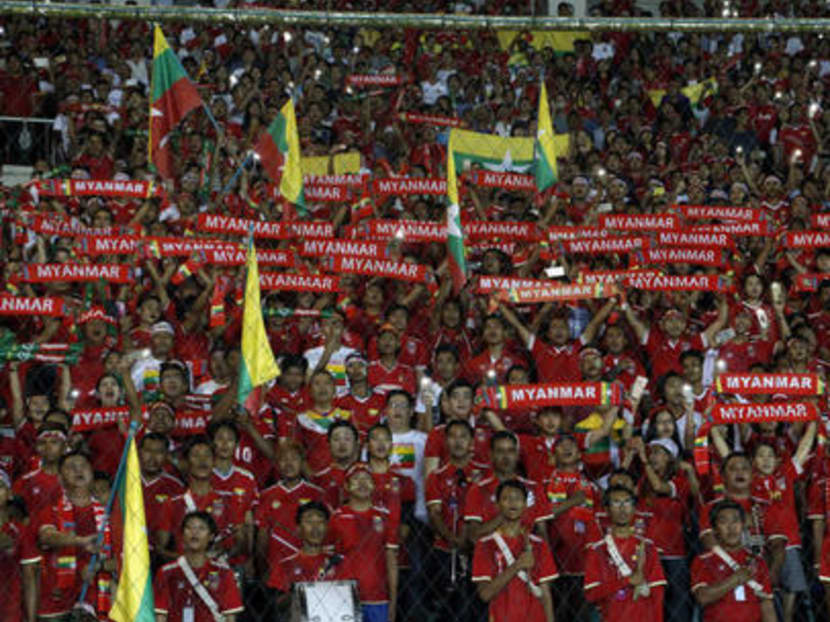
(Myanmar fans supporting their country in Yangon. Photo: AP)
Myanmar is different. The sight of the White Angels playing exciting and effective football in front of 50,000 fans in Yangon would not have made any of the Singapore squad watching in the Philippines feel better.
It is no accident. In 2009, the Myanmar government gave permission to the Myanmar Football Federation (MFF) to start a new professional league. Participants had to guarantee a certain level of investment that would ensure levels of professionalism and facilities.
The league started small, in Yangon only, before spreading out slowly.
Businessmen such as well-known tycoon U Tay Za invested in clubs and had to divert funds into youth development while, elsewhere, there was a national programme introduced into schools.
Young talent then had somewhere to play and the MFF brought in good coaches to help.
A bronze-medal win at the 2011 SEA Games, a silver at last year’s edition, which was held in Singapore, and qualification for the AFC Under-22 Championships in 2013, have since confirmed that Myanmar was on the right track. Then there were massive celebrations as Myanmar secured a spot at the Under-20 World Cup last year. This not only motivates the next generation but helps brings sponsors on board.
The World Cup team forms the basis of the current senior side — with the same coach, Gerd Zeise, at the helm — and following a three-week training camp in Europe, the results are there to see. Myanmar are in the semi-finals of the AFF Suzuki Cup for the first time in 12 years.
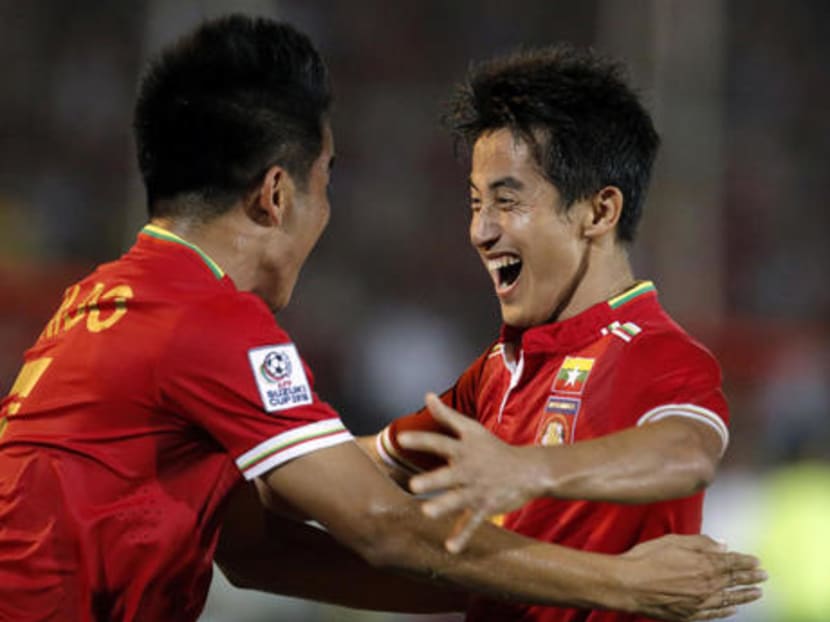
(Myanmar's Ye Ke Oo (left) and David Htan celebrating a goal. Photo: AP)
They have to overturn a 0-2 deficit to Thailand in tonight’s second leg, which will be tough, but advancement to the knockout stages is already a sign of how far the country has come. More importantly, it puts the next stage of progress in reach.
The White Angels want consistent knockout finishes at the Suzuki Cup, better results in World Cup and Asian Cup qualification and even more investment in the grassroots.
The squad holds much promise. Only five players are over 23 and only one over 27. Most of the stars such as Aung Thu in attack and Zaw Min Yun in defence could easily have another five, six or seven Suzuki Cups in them.
“Technically, Myanmar are a good team,” said Kiatisuk after the 2-0 win. “Now there is more organisation and everything is more professional. If these improvements continue, then Myanmar have a bright future.”
MAKING STRIDES
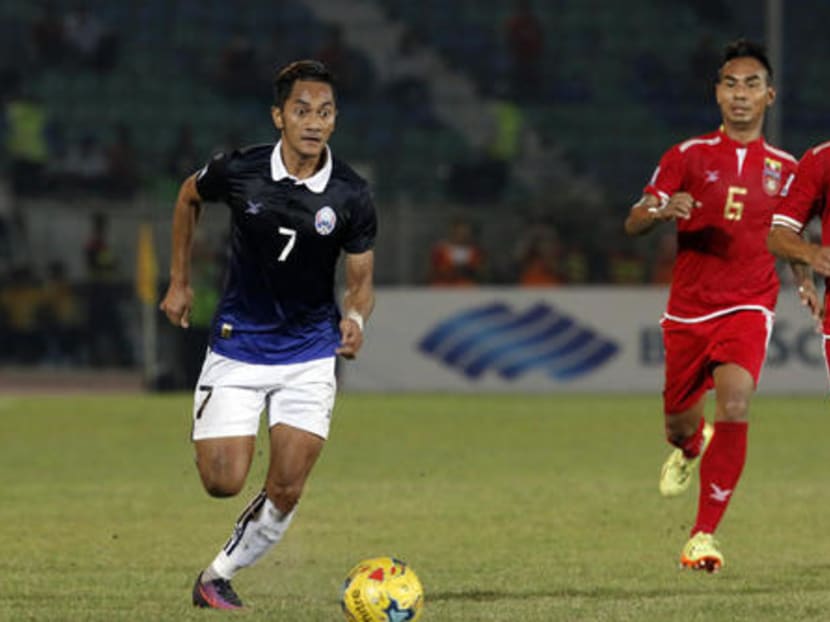
(Cambodia's Prak Mony Udom in action against Myanmar. Photo: AP)
Likewise, the Cambodians are also starting to make strides. The country does not have the infrastructure yet but has passion and natural talent in spades. Compared with Singapore, football is seen as a viable career option by youngsters.
Over 50,000 fans turn out in Phnom Penh for friendly games. Cambodia has used aid from Fifa and the Asian Football Confederation wisely and has benefitted from Japanese and South Korea assistance too.
Recent results against Singapore indicate progress too.
In June last year, the Lions beat Cambodia 4-0 in Phnom Penh a World Cup qualifier. Just five months ago, Cambodia defeated Singapore 2-1 in a friendly in Phnom Penh to record their first win over the Lions in 44 years.
Back then, the Cambodians were ranked 180th on the Fifa ladder, 22 places below Singapore. Today, Cambodia are 168, six places behind the Republic.
Similarly, Malaysia was relieved to come back from 2-1 down to defeat the Angkor Warriors 3-2 in their opening Suzuki Cup group stage game thanks to two late goals.
“Cambodia has improved a lot and they are very well-prepared,” said Malaysia coach Ong Kim Swee. “The qualification games helped them for this tournament and I don’t think any team will find it easy when to go against Cambodia.”
It all adds to progress made and huge potential for more and while there may be fears in Singapore, there are positives.
Ultimately, a stronger South-east Asian scene benefits everyone. Better teams and tougher tests will result in increased standards across the board.
It is up to Singapore to find a way to deal with, take advantage of this, and improve too.
CURRENT FIFA RANKINGS FOR ASEAN COUNTRIES:
117 - The Philippines
129 - Vietnam and Thailand
156 - Malaysia
162 - Singapore
166 - Myanmar
167 - Laos
168 - Cambodia
179 - Indonesia
190 - Brunei
Singapore’s recent results against Cambodia, the Philippines and Myanmar
Against Myanmar
June 2016 (friendly) - Singapore won 1-0
March 2016 (friendly)- won 2-1
Nov 2014 (Suzuki Cup)- won 4-2
June 2013 (friendly) - Won 2-0
Against Cambodia
Nov 2016 (friendly) - Singapore won 1-0
July 2016 (friendly) - lost 2-1
Oct 2015 (World Cup qualifying) - won 2-1
June 2015 (WCQ)- won 4-0
Against the Philippines
Nov 2016 (Suzuki Cup) - Singapore drew 0-0
Dec 2012 (Suzuki Cup) - drew 0-0
Nov 2012 (friendly) lost 0-1
Sept 2012 (friendly) lost 0-2
ABOUT THE AUTHOR:
John Duerden has been based in Asia for almost 20 years and covers the continental football scene for The New York Times, BBC Radio, The Guardian, FourFourTwo and World Soccer magazine.





